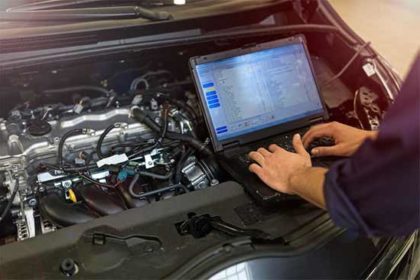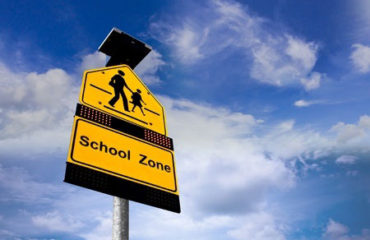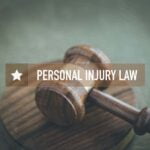Can your car’s event data recorder (black box) help your accident claim?

The NHTSA recently rolled back its 2012 decision to make event data recorders mandatory in all cars. It is unclear whether the move resulted from the lack of enthusiasm from manufacturers to fit all cars with these units or from the outcry of privacy activists who have been protesting against these data recorders due to potential abuse of the information recorded by these units.
Nearly 96% of all vehicles on American roads (manufactured after 2014) have event data recorders (EDR). Another noteworthy fact is that the insurance lobby is more than keen on the installation of these devices, because it serves their cause. If you own a vehicle or even if you rent vehicles every so often, you need to know what the EDR can do and how it can influence the outcome of your accident claim.
Say hello to the event data recorder in your car!
First, you need to know if your car has an EDR. You will get this information from the owner’s manual. The device looks like a small box, the size of an iPod. It’s usually placed under the front row seats, most often under the driver’s seat or the central console, which is in between the front row seats.
The unit is connected to the airbag system as it was originally designed to monitor the metrics that signal the deployment of the airbag. EDRs collect two types of data:
- Non-deployment event record: Data about crashes that did not lead to the deployment of the airbags. Both pre-crash and post-crash data are recorded, but the information is wiped out after 250 ignition cycles.
- Deployment event data: Information collected in the event of airbag deployment. The recorded data includes pre-crash and crash information and possibly some post-crash details, depending on the damage to the vehicle and the EDR. This information is never overridden when the airbags do deploy.
What information does the EDR capture?
The NHTSA is in the process of implementing a rule that will standardize the information collected by EDRs. For now, the data collected by the event recorder can vary based on the auto manufacturer, the model of the vehicle and the EDR unit itself. However, the unit normally captures 15 or more variables, monitored about 20 seconds before the crash and 5-10 seconds after the crash. The information usually includes:
- Pre-crash vehicle operational dynamics such as the speed, use of accelerator, engine RPM, use of steering wheel.
- Crash force, both forward and lateral.
- Crash duration.
- Application of brakes and activation of antilock brake.
- Change in speed after impact.
- Activation of fault codes or warning signals.
- Engagement of stability control.
- Vehicle roll angle.
- Number of ignition attempts after the accident.
- Use of restraint and engagement of pretension and force-limiter for front seat occupants.
- Position of front seats.
- Size (weight) of front seat occupants.
- Number of impacts.
- Deployment of airbags, speed of deployment and faults, if any.
- Activation of the automatic collision notification system.
In addition to these, some units also record the duration of the trip, time of the day when the crash occurred, the vehicle location at the time of the crash and the vehicle route. One more thing to remember is that EDRs only function when the vehicle is turned on. If you were in an accident in which somebody rammed his car into your stationary vehicle while the vehicle is not on, your EDR will not have information about this crash.
Accessing EDR information is hardly an easy task!
After reading all that, the most logical question that comes to mind is this; If EDR data is so comprehensive and so accurate, why is it not being used more often in accident claim cases? Well for starters, the data is not easy to access.
You cannot just yank the unit out and plug it into your computer to access the information that it holds. Usually, the cost to uninstall and access the data can range from $200- $2,000 depending on the make and the model of the unit. Plus, the fact that many motorists don’t know if their vehicle has an EDR often stops car owners from using the extremely valuable and reliable information that the unit holds. That said, insurance companies have long been making money off of the ignorance of vehicle owners.
All you have to do is agree to have the damage repaired at a workshop certified by the insurance company, and you will be giving them the opportunity they need to access the EDR information before you get to it. Do they have the legal right to do so? More on this below.
Who is the legal owner of the EDR and the information it has collected?
The Driver Privacy Act of 2015, which is a federal law, makes you, the owner or the lessee of a motor vehicle, the owner of the EDR unit as well as of the data collected by it. As such, EDR data can only be accessed by an investigator if he/she:
- Has been ordered or authorized by the judiciary to do so.
- Has a written or recorded consent from you.
- Is conducting traffic safety research.
- Needs the data to offer medical care for injuries sustained due to the crash.
- Has federal authorization to inspect or investigate the data.
At this time, 13 states across the country have implemented EDR privacy laws that restrict access to EDR data and the use of such information without the permission of the vehicle owner. Kansas has not yet enacted any such laws. You can find an updated list of the states and their laws on the website of the National Conference of State Legislatures at http://www.ncsl.org/research/telecommunications-and-information-technology/privacy-of-data-from-event-data-recorders.aspx.
Has this information been used in personal injury and accident claims?
Many courts across the country and also the scientific community stand in support of EDR information. In fact, EDR data has been consistently admitted as evidence and expert testimony regarding EDR data is also allowed.
However, there are a few instances in which the accuracy and the reliability of this data can and have been challenged. For example:
- If the EDR has malfunctioned or was not working properly at the time of the crash.
- When there is photographic evidence of damage that can be used to refute the data from the EDR.
- The unit has not been or was not maintained or calibrated properly.
Save for these scenarios, the courts have maintained that there is nothing new or novel about the collection of crash data, and as such, no reason to disallow its use.
Can the information from the EDR of your vehicle be used against you?
Yes, it can be, and in more ways than one! Legally, the data saved in the unit is owned by you and even the police are required to get a warrant to access it. However, it’s a different story with insurance companies.
When you buy insurance coverage, you will generally be signing a document with a clause which states that you will cooperate and assist in settling claims. With that, you give the insurance provider the right to EDR data.
But as discussed above, accessing this information is not easy. Once again, insurance companies have found a way to work around this. If you send your car for repair to a workshop certified by the insurance company, they can easily extract this information. A skilled technician can access the data through the OBD II port under the dashboard or by directly connecting to the airbag control module.
What if the information from the EDR proves your version of the story?
The insurance company or auto mechanic may operate under the assumption that you don’t know about the existence of the EDR. If the impact did not lead to the deployment of the airbags, they won’t have to wait long before the data will be overwritten and lost forever, ruining your chance of using the data to prove your claim. An overwritten unit may be perceived as a sign of guilt on your part, by the judge/jury.
The important role of EDR data in accident claims is certainly not lost on insurance companies. In fact, this has led many coverage providers to offer reduced rates in exchange for incorporating after-market, EDR systems.
Progressive Insurance and General Motors’ OnStar already have such deals in place. Most insurance companies will act fast to get their hands on the EDR data of your car and that of the other vehicle/vehicles involved in the crash.
How can your EDR data help your accident claim?
The information from the EDR often helps to fill the gaps in your narrative of the accident. At the least, it helps to support other evidence. Because the data is quantitative in nature, it is hard for the defendants counsel to rebut it. For example:
- In a multi vehicle accident, the EDR data can prove that you did indeed stop short of hitting the vehicle ahead of you but were struck from the rear, which caused your car to hit the cars ahead in the pile-up situation.
- If it comes down to a “he said, she said” scenario in court, the hard figures of the EDR data can help to shut down the arguments and clearly bring out the circumstances surrounding the crash.
- Similarly, in a personal injury claim, the exact measure of the delta force (impact force) can support the severity of the injuries reported by you. The speed changes after the crash and the direction of impact are important metrics in determining the mechanics of the injury.
- Also, EDR data can prove to be the voice of clarity and reason in an accident that has led to the death of the motorist or when the accident has caused loss of memory.
All of this is only possible if you act fast!
Time is a constraint when you intend to use EDR data to support the facts of the accident. Moreover, an expert analyst can help to interpret the data such that it creates an better and more complete image of the severity of the crash.
An experienced car accident lawyer will not only help you to access the EDR data but also help to use it in the most beneficial way. At the minimum, an attorney will be able to stop the misuse of this data and its destruction. If you have been in a car accident, contact us today and our team of attorneys and expert car crash investigators will ensure that the EDR data from all the vehicles involved in the crash is preserved, accessed and used as it should be.
References:
- https://www.propertycasualty360.com/2018/05/01/edr-imaging-and-claims-putting-the-pieces-together-after-a-crash/?slreturn=20190410151833
- https://www.motorists.org/blog/car-black-box-know-one/
- https://spectrum.ieee.org/computing/embedded-systems/the-automotive-black-box-data-dilemma
- https://www.kansascity.com/news/local/article344345/%E2%80%98Black-boxes%E2%80%99-in-vehicles-show-the-truth-in-wrecks.html
- https://www.irmi.com/articles/expert-commentary/event-data-recorders-balancing-the-benefits-and-drawbacks









